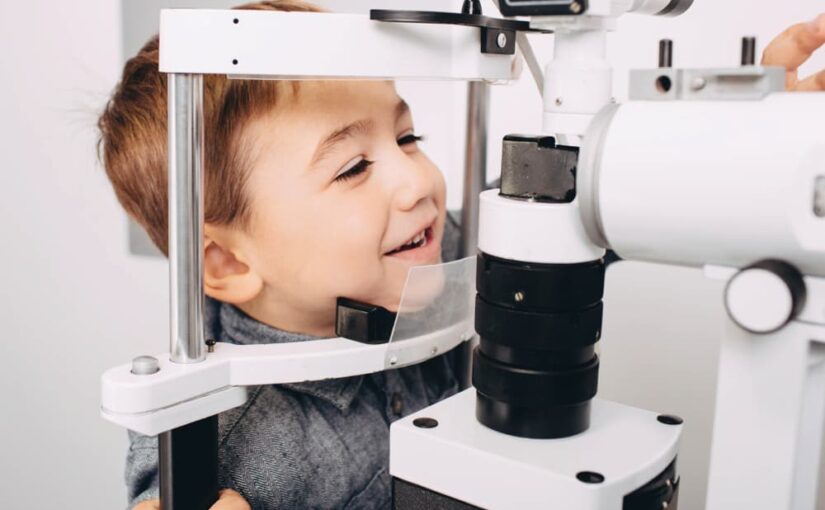By reading this blog post, you’ll learn:
- When your child should receive their first eye exam and how often they should have their eyes examined
- What signs to look out for that may indicate an issue with your child’s vision
For parents, there’s nothing more important than the healthy development of their child. An essential part of that development is their vision, as that will aid in coordination, learning, and fine motor skills. As a child’s vision develops, though, it can be difficult to know when you should start to be concerned or when they are following the normal development path.
During this period of rapid development, your child may receive a vision screening by a pediatrician or through their preschool. While these screenings can find issues, they also miss potential concerns. This can give a parent a false sense of their child’s development.
Instead, parents should seek out a comprehensive eye examination conducted by a doctor of optometry. By utilizing a specialist, you’ll gain the needed insights to take early corrective action as necessary.
When Should You Book Your First Children’s Eye Exam?
Infant eye exams, preferably before they turn a year old, can help identify a variety of early vision issues:
- Astigmatism
- Farsightedness
- Nearsightedness
- Nontypical eye movement
- Nontypical eye alignment
- Nontypical responses to stimuli like light
- Weakness in one eye when compared to the other
After this first initial examination, your child should undergo another one after they’ve turned three but before they’ve turned five years old. Generally, a full eye examination should also be conducted before they enter first grade. Once they’ve reached elementary school, their eyes and vision should be checked annually.
Based on the results of any of these examinations, the eye doctor may recommend further examinations or follow-up appointments. This approach will help uncover potential issues early enough so they shouldn’t affect other aspects of the child’s development.
What Are the Common Signs of Vision Issues in Children?
Of course, if you suspect that your child is having issues with their eyesight, you don’t need to wait until their next eye examination to discuss it with a doctor. You can book an earlier appointment before the schedule suggested in the previous section, especially if you notice some of the common indicators of a child’s vision issue:
- • Covering an eye
- • Frequent eye rubbing
- • Frequent headaches
- • Holding a book too close
- • Issues with eye-hand-body coordination
- • Noticeable sensitivity to light
- • Reading with their fingers
- • Sitting too close to the TV
- • Squinting
Your child won’t know they have difficulty seeing as they are unable to compare their experience to others. Keeping watch for any of those signs will help you know when a quicker return to the eye doctor is needed.
How Can You Help With Your Child’s Vision Development?
There are ways to help your child develop improved vision skills. Some of these things are fairly routine, like providing time to color or giving them building blocks with which to play. Other things may take further involvement, such as playing catch, even with a bean bag, or reading aloud and having your child follow along in the book. Playing with other children will also aid in developing visual skills.
Where Should You Go for Pediatric Eye Care?
If it’s time for your child’s eye examination or if you’re noticing potential issues with their vision, contact Northeast Laser in West Springfield, MA today for an appointment. We offer comprehensive exams and services to help identify and correct potential eyesight concerns. Call us today at 413-363-2732.
Featured Image: Peakstock/Shutterstock

